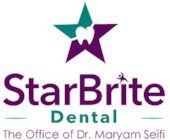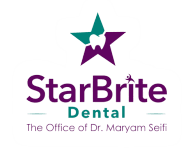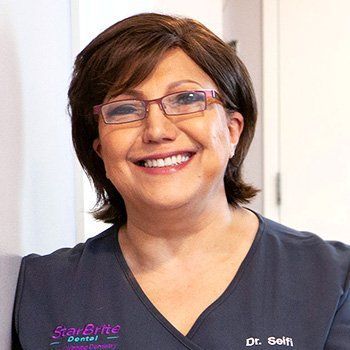Comparative Analysis: Orthodontic Braces vs. Airway Orthodontics
If you’re a working professional 29 or older in Rockville, Maryland, looking into orthodontic solutions, you may have heard of traditional orthodontic braces and perhaps the newer concept of airway orthodontics. At StarBrite Dental, we’ve seen how both approaches can transform smiles and support overall health. In this article, we’ll provide a clear, accessible comparison between braces and airway orthodontics, how they differ, what conditions each addresses (including sleep apnea), how mouth guards fit in, and how you can decide which is right for your lifestyle.
Understanding Orthodontic Braces
Orthodontic braces are the age‑old workhorse of alignment correction. For adults in their 30s, 40s, or beyond, braces still provide reliable results when it comes to aligning teeth, closing gaps, improving bite, and delivering a smile you feel confident about.
What braces address
- Crooked or crowded teeth
- Malocclusion (overbite, underbite, crossbite)
- Gaps between teeth
- Bite problems that may lead to wear or jaw discomfort
- Aesthetics and function combined
How braces work
Traditional braces consist of brackets bonded to the teeth and arch‑wires that apply controlled pressure to gradually move teeth into correct alignment. Modern adult orthodontics may also incorporate clear or ceramic brackets, lower‐profile wires, and more discreet options.
While many people imagine braces as a treatment for teenagers, more and more working adults are opting for them, especially when they want lasting alignment and are willing to commit to 18–24 months of treatment, maintenance, and follow‑up.
Benefits of choosing braces
- Highly predictable outcomes when treatment is well‑planned and monitored
- Addresses visible teeth alignment and underlying bite issues
- Can improve long‑term oral health (less wear, easier hygiene)
- At StarBrite Dental, you’ll be treated by a team committed to uncompromising dedication to excellence of care and the integrity to place the patient’s needs first
Considerations for adults
- Treatment time may be longer than it is for younger patients
- Hygiene is crucial because braces increase the challenge of cleaning
- Some discomfort, dietary restrictions, and maintenance are required
- Braces primarily address tooth/bite alignment; they may not address underlying airway or skeletal issues (which brings us to airway orthodontics)
What Is Airway Orthodontics?
Airway orthodontics is a more holistic orthodontic approach that looks beyond just teeth alignment and bite. It takes into account the airway, jaw development, palate shape, and how those factors affect overall health, especially for adults who may be dealing with issues like sleep apnea, snoring, or constricted jaw/palate architecture.
How airway issues tie into orthodontics
Many adults with obstructive sleep apnea (OSA) or chronic snoring have contributing anatomical factors, such as narrow jaws, a high vaulted palate, a misaligned bite, or a retruded lower jaw, which restrict airway space. Treating these structural issues often requires more than simply straightening teeth; it may involve expanding the palate, repositioning the jaw, or using oral appliances.
Key techniques in airway orthodontics
- Palate expanders (for adults, this may involve surgically assisted expansion)
- Jaw repositioning or functional appliances that stimulate forward growth/position of the lower jaw
- Oral appliances and
mouth guards designed to maintain airway openness during sleep
- Aligning the bite and teeth as part of an airway‑friendly design
Benefits of airway‐focused orthodontics
- Improves not only smile aesthetics but also airway health, sleep quality, and daytime energy
- Can reduce or eliminate snoring, improve OSA outcomes, and reduce reliance on CPAP for some patients
- Addresses long‑term stability by considering skeletal and airway factors
- Particularly suitable for adults who are experiencing sleep apnea symptoms and want orthodontics that treat more than just appearance
Things to keep in mind
- Treatment may involve more complex diagnostics (CBCT scans, airway assessments)
- It may combine orthodontics with other disciplines (sleep medicine, ENT, oral surgery)
- The timeline and cost may differ from traditional braces
- Clear communication and commitment are key. At StarBrite Dental, we emphasize patient education, tailored plans, and listening closely to your concerns.
Braces vs. Airway Orthodontics: A Comparative Overview
Here’s a side‑by‑side comparison to help you weigh your options:
| Feature | Traditional Braces | Airway Orthodontics |
|---|---|---|
| Primary goal | Straighten teeth, improve bite | Improve airway and skeletal alignment, plus bite & airway function |
| Typical issues treated | Crooked teeth, malocclusion, spacing/gaps | Narrow jaws, high palate, sleep apnea/snoring, airway restriction |
| Diagnostic focus | Alignment of teeth and bite | Palate width, jaw position, airway volume, sleep breathing patterns |
| Duration (adult) | ~18‑24 months (varies) | Varies—may include phases for expansion or jaw repositioning + orthodontics |
| Mouth/gum hygiene demands | High (brackets hinder cleaning) | Also high; may include appliances or surgery |
| Impact on sleep & breathing | Indirect; not always addressed | Direct: improved airway, reduced snoring/sleep apnea risk |
| Best for working adults wanting | A confident, well‑aligned smile | A confident smile and improved sleep, breathing, and long‑term health |
If you’re primarily concerned with appearance and tooth alignment, traditional braces may suffice. But if snoring, daytime fatigue, or diagnosed sleep apnea are part of your story, airway orthodontics may offer the broader benefits you need.
Sleep Apnea, Snoring & Orthodontic Considerations
What is sleep apnea, and what causes it?
Sleep apnea, specifically obstructive sleep apnea (OSA), occurs when the muscles in your throat relax too much during sleep, causing partial or complete blockage of the airway. Repeated interruptions in breathing lead to reduced oxygen, fragmented sleep, and daytime symptoms like fatigue, brain fog, irritability, and even cardiovascular risk.
Common contributing factors include:
- Large tonsils or adenoids (in children); in adults, often tissue collapse around the airway
- Obesity/neck circumference, but also anatomical factors such as narrow jaws, retruded mandible (lower jaw), or high palate
- Lifestyle factors (smoking, alcohol)
- Poor skeletal or dental development leading to insufficient airway space
Signs and symptoms you should watch for
- Loud, regular snoring (especially with gasping/choking)
- Daytime sleepiness, difficulty concentrating
- Morning headaches or dry mouth
- High blood pressure, nighttime awakenings
- Observed breathing pauses during sleep
If you recognize these symptoms, it’s important to speak to your dentist or sleep specialist, especially before beginning orthodontic treatment.
How orthodontics and mouth guards come into play
Orthodontists and dentists increasingly recognize that treating structural issues in the mouth and jaw can help relieve sleep‑related breathing disorders. In particular:
- Mouth guards/oral appliances:
These devices are
worn during sleep to maintain airway patency. They can be custom‑made by a dentist, and are more effective than generic OTC options.
- Snore guards vs. over‑the‑counter (OTC) mouth guards: OTC mouth guards are generic, often one‑size‑fits‑all, and primarily protect teeth rather than optimizing the airway. A snore guard (or custom oral appliance) designed by a dentist is fitted specifically to reposition the jaw, hold the tongue forward, or widen the airway space. The fit, comfort, and efficacy are typically far superior in a custom device.
- Jaw/palate expanders: These appliances widen the upper jaw (palate) and, by doing so, increase the volume of the nasal and oral airway. For adults, this may require surgically assisted expansion, but in the right hands, it can yield improved breathing and orthodontic alignment at the same time.
At StarBrite Dental, our team emphasizes comprehensive care and long‑term resolution (not just quick fixes). Our philosophy is: “Every patient deserves high-quality, compassionate care delivered with integrity and skill.”
How Mouth Guards Help with Sleep Apnea
Custom dental mouth guards (oral appliances) play an increasingly important role in treating mild‑to‑moderate sleep apnea and snoring when CPAP is not tolerated or as adjunctive therapy. Here’s how they help:
- They hold the lower jaw (mandible) slightly forward during sleep, opening the airway behind the tongue.
- They stabilize the tongue and soft palate, reducing airway collapse.
- They may help reduce teeth grinding (bruxism), which often co‑exists with sleep breathing disorders.
- Because they are custom‑fitted, they cause less discomfort and promote better compliance than generic OTC guards.
When you combine an appliance with orthodontic or airway‑based orthodontic treatment, you get a synergistic effect: healthier airway, better alignment, improved function, and often a more confident smile.
Which Path Should You Choose? A Decision Guide for Working Adults
As a working adult in Rockville (with a career, schedule, family—the usual busy life), your decision should balance practicality, long‑term benefits, and alignment with your health goals.
Ask yourself these questions:
- Do I experience snoring, daytime fatigue, or known sleep apnea (or have I been told I have anatomical/jaw airway issues)?
If yes, airway orthodontics (or a combined approach) may be your best option.
If no, and your main concern is alignment/aesthetics, then traditional braces may suffice.
- Am I willing to commit to longer diagnostics, possible expansion or jaw repositioning, and perhaps working closely with a dental‑sleep medicine team?
If yes then airway orthodontics could be very worthwhile. - Is my schedule flexible enough to accommodate visits, appliance adjustments, follow‑up, and perhaps compliance with a sleep appliance at night?
Adult treatment demands discipline and time; ensure your provider understands a working adult’s lifestyle. - Do I want not just a straight smile, but better breathing, less snoring, improved sleep quality, and long‑term health benefits (beyond appearance)?
If yes then don’t just pick braces; look for a provider with airway orthodontic expertise.
At StarBrite Dental in Rockville, our practice emphasizes adult‑friendly scheduling, comprehensive diagnostics, a comfort‑first environment, and one‑stop comprehensive care (cosmetic, general, surgery, sleep).
What to Expect at StarBrite Dental in Rockville
When you book a consultation at StarBrite Dental ( 5936 Hubbard Dr, Rockville, MD 20852 ) you’ll benefit from:
- A thorough exam, including dental, bite, airway, habit, and sleep‑breathing assessment.
- Clear explanation of your treatment options tailored to adult professionals: whether that’s braces only, airway orthodontics, or a combination.
- A friendly, dedicated team with a philosophy of high technical skill, superior quality of care in every dental service we provide, and integrity in our communications and everyday business.
- Support through financing, scheduling, and comfort‑focused care that respects your busy lifestyle.
- A practice that is rooted in the Rockville / Washington metro community for decades, so you’re building a long‑term relationship, not just a single treatment.
Final Thoughts & Your Call to Action
If you’re a working adult in Rockville looking for orthodontic care, you have two compelling paths:
- Traditional orthodontic braces: proven alignment solutions focused on teeth and bite.
- Airway orthodontics: a modern, holistic approach that goes beyond teeth to improve airway and sleep health, often with the added bonus of alignment.
Given your age, responsibilities, and busy life, you want an orthodontic partner who respects your time, explains your choices clearly, and supports results that last, not just cosmetically, but functionally.
If you’re ready to explore your options, our team at StarBrite Dental is here to help. Book your consultation today and let us assess whether braces, airway orthodontics, or a combination will give you the smile and sleep quality you deserve.
Call us at or visit our website to request your appointment. Your next‑level orthodontic care in Rockville starts here.


